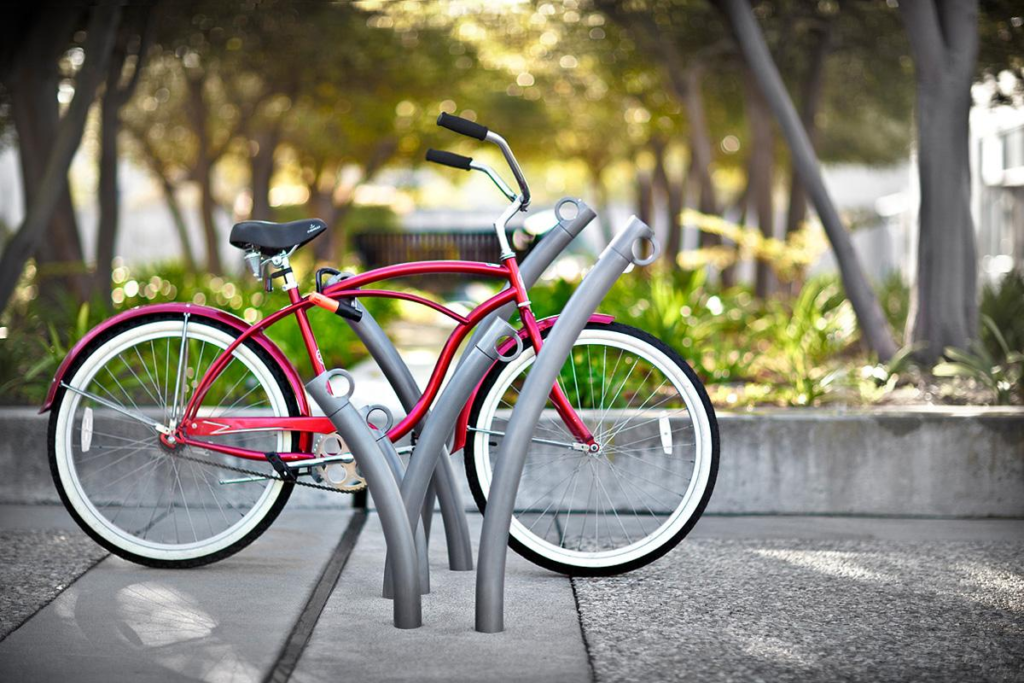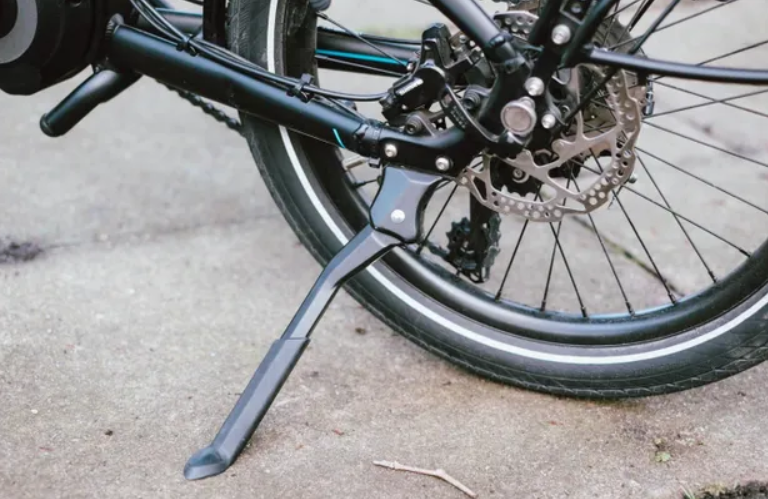Ever noticed the absence of kickstands on many bicycles nowadays? It’s not an oversight but a deliberate design choice. In the dynamic world of cycling, where every ounce and minor detail counts, kickstands have fallen out of favor. So, why don’t bikes come with kickstands anymore?
From weight savings to aesthetic appeal and even safety considerations, several factors influence this trend. But what drives manufacturers to omit this useful feature? And how do riders feel about this change?
The questions have probably crossed your mind at least once. Let’s explore the intriguing reasons why bikes don’t come with kickstands these days.
Why Don’t Bikes Come with Kickstands?
Today, the noticeable absence of kickstands on many bicycles raises eyebrows. This design choice is deeply rooted in enhancing the cycling experience. Let’s explore these reasons in depth.
1. Adds Cost
Adding a kickstand isn’t as simple as it might seem. Crafting a durable and functional stand requires precision engineering, quality materials, and rigid testing. These factors contribute to increased production costs.

Moreover, integrating a kickstand into a bicycle’s design requires additional labor and potential modifications to the frame. For manufacturers aiming to hit a specific price point or offer competitive prices, omitting the stand becomes a strategic cost-saving measure.
2. Excess Weight
In the world of cycling, especially at competitive levels, every gram counts. While a stand might appear lightweight and small, its addition can impact a rider’s efficiency, speed, and overall performance.

Over long distances or challenging terrains, extra weight can increase fatigue, demanding more energy from the rider. For those seeking optimal performance and endurance, the weight of a kickstand becomes a significant consideration.
3. Affects Stability and Aerodynamics
A bike’s design, particularly in racing models, emphasizes aerodynamic efficiency. A protruding kickstand can introduce unwelcome aerodynamic drag, potentially affecting the bicycle’s speed and the rider’s performance.

Furthermore, while kickstands are meant to offer stability when parking, they can sometimes be unreliable, especially on uneven surfaces or in windy conditions. A bike relying on a stand might easily tip over, risking potential damage.
4. Can Catch Things When on the Trail
For those who venture off-road or navigate mountain trails, the environment poses many challenges. A kickstand, in such terrains, can become more of a hindrance than a help.

It can easily snag on obstacles like roots, rocks, or dense foliage, risking abrupt stops, accidents, or even damage to the bicycle. The smooth and uninterrupted flow of a ride, essential for many trail enthusiasts, can be compromised by a kickstand’s potential to catch on these natural impediments.
5. High Risk of Bike Damage in Case of Accident
Accidents, though unfortunate, are a reality for many cyclists. In such events, a kickstand can become a serious problem. It can bend, break, or even cause further damage to the bike’s frame or other integral components.

The aftermath of an accident can see the stand not just as a broken accessory but as a catalyst for more extensive, and often expensive, damages to the bicycle.
6. Could Contribute to Injuries in Case of Accident
Safety remains paramount in all cycling endeavors. A kickstand, especially if not fully retracted or if malfunctioning can pose a tangible risk. During a fall or collision, it can entangle with the rider’s clothing or gear, worsening injuries.

Furthermore, in group rides or crowded biking environments, a protruding kickstand can become a hazard not just to the rider but to others nearby, increasing the potential for accidents and injuries.
The modern bicycle’s design, which often excludes kickstands, is a testament to the evolving priorities in the cycling world. From performance considerations to safety concerns, the reasons are numerous.
As riders and enthusiasts, understanding these intricacies provides a fresh perspective on our two-wheeled companions.
What Are Some Ways to Prop Up Your Bike Without a Kickstand?
In the contemporary world of cycling, many bicycles come without the traditional kickstand. While this design choice optimizes performance and reduces weight, it poses a practical question: how do you prop up your bike when you stop?
Following are a few effective methods to keep your bicycle upright without relying on a kickstand.
1. Lean the Bike on Something
One of the simplest and most intuitive methods is to lean your bicycle against a stable object. This could be a wall, a tree, a fence, or any other sturdy vertical structure. Ensure that the bike’s handlebar and frame make secure contact with the object to prevent it from slipping.

This method is particularly useful in urban environments where walls and fences are abundant. However, always be respectful of private property and avoid blocking pathways.
2. Lay Your Bike Down
While it might seem unconventional to some, laying your bicycle down on the ground is a practical solution, especially in open areas without structures to lean on. Choose a spot where the bike won’t be in the way of pedestrians or other cyclists.

Lay it gently on its non-drive side (the side without the chain and gears) to prevent any potential damage to the drivetrain. This method is especially popular among mountain bikers and trail riders in areas where natural leaning spots are scarce.
3. Use a Bike Rack
Bike racks are becoming increasingly common in cities, parks, and popular cycling destinations. These structures are specifically designed to hold them securely. Simply slot your bicycle’s front wheel or frame into the rack.

Some racks even offer locking mechanisms for added security. Using a bike rack not only keeps your bicycle upright but also reduces the risk of theft, making it a win-win solution for urban cyclists.
While the absence of a kickstand on modern bikes might initially seem like a challenge, several practical solutions can keep your bicycle upright and secure. Whether you’re navigating the concrete jungle or exploring rugged trails, these methods ensure your bike remains safe and undamaged during stops.
So, the next time you’re out and about on your two-wheeled companion, remember these handy tips to prop up your bike without a kickstand.
Can You Add a Kickstand After Buying a Bike?
For many cycling enthusiasts, this question often arises. Whether you’ve invested in a high-end racing bicycle or a casual commuter, the convenience of a kickstand is undeniable. Most bicycles, regardless of when they were purchased, can be fitted with a kickstand.

While many modern bikes might not come equipped with one due to weight and aerodynamic considerations, the design usually allows for post-purchase additions.
How to Install a Kickstand on a Bike?
When adding a kickstand to your bicycle, first ensure you select a side stand compatible with your bicycle type. Begin by identifying the optimal spot, usually between the chainstays near the rear wheel.

Check if your bike has a pre-drilled hole or mounting plate for easy installation. If it does, align the kickstand with the hole, ensuring a flush fit. If no pre-drilled hole, opt for a clamp-on kickstand, positioning it securely between the chainstays.
Fasten the stand using the provided bolt, ensuring it is snug but not overly tight to prevent frame damage. Some kickstands offer adjustable lengths; adjust as needed to ensure your bike leans slightly yet remains stable.
Finally, test the kickstand on various terrains to ensure your bicycle stands firm without wobbling.
Are Double Leg Kickstands Better for Stability?
Double-leg kickstands offer enhanced stability for bicycles compared to their single-leg counterparts. By supporting the bike from both sides, they distribute weight more evenly, reducing the risk of tipping, especially on varied terrains or when the bicycle is loaded with gear.

However, while they provide a sturdier base and can protect drivetrain components by lifting the rear wheel off the ground, they tend to be heavier and may require more complex installation.
For bikes carrying extra weight, double-leg kickstands are a beneficial choice, but their added weight and installation complexity must be taken into account.
Conclusion
The absence of kickstands on many modern bikes is a testament to changing design philosophies and rider preferences. While these handy supports were once everywhere, today’s cyclists prioritize weight, aesthetics, and performance.
But as we’ve discovered, there are many reasons, ranging from safety concerns to cost implications. Whether you’re a seasoned rider or new to the biking community, it’s essential to choose a bicycle that aligns with your needs.
If you find yourself missing that trusty kickstand, remember, there are always innovative solutions waiting in the wings.
FAQs
Replacement is advised if it becomes bent, loose, or shows signs of structural weakness.
While not essential, a stand provides convenience by allowing a bike to stand upright independently.
No, kickstands vary in design and size; it’s essential to find one compatible with your bike type.
It’s named “kickstand” because riders “kick” it down to stand their bike upright.



